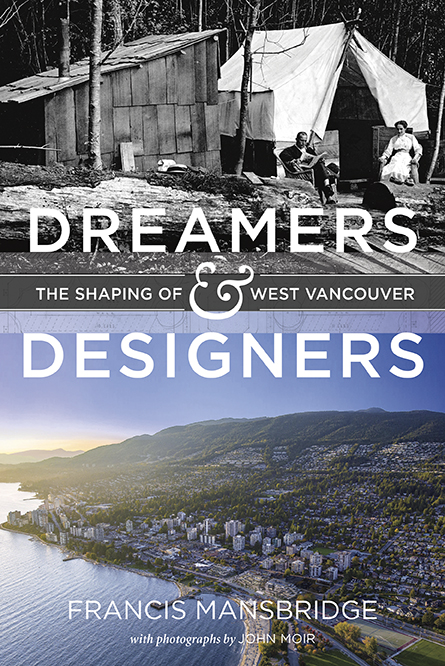
Dreamers and Designers: The Shaping of West Vancouver
Review By Peter Hall
July 24, 2019
BC Studies no. 204 Winter 2019/20 | p. 212-213
Between 2011 and 2016, the population of the District of West Vancouver declined by one half of one percent. In contrast, the population of Metro Vancouver grew 6.5%; even the comparably wealthy West Point Grey neighbourhood of Vancouver grew by 2.1%. In a region where house prices are out of reach for almost all local earners and rentals are increasingly unaffordable, West Vancouver’s population decline is exhibit A when residential supply constraints are cited as causing the housing crisis.
The negative effects of population decline seem to have been on the minds of the West Vancouver Historical Society’s Book Committee when they commissioned Francis Mansbridge to write this, the third book in their series “celebrating and preserving various aspects of West Vancouver’s history.” I should add here that I am not the Peter Hall acknowledged as one of the individual contributors who made the book possible.
Mansbridge’s readable account provides ample and well-deserved fodder for the argument that the exclusionary practices of the few, are to blame for the inability of the many to attain affordable housing. Where I would push the author – and his local sponsor-audience – is on the diagnosis of the institutional arrangements that enable these exclusionary impulses, and hence on the policy prescriptions.
Perhaps one of the most fascinating tells in the book is the way that Mansbridge describes the lineage of West Vancouver’s first British settlers. We learn, for example, that Reeve Joe Leyland, co-author of the District’s first zoning bylaw, was the second son in a family that traces its origins to the Norman Conquest. I am sure this fact was selectively valued by past archivists; what it also reveals is how British laws and customs of primogeniture helped to shape this place half a world away.
Appropriately, Mansbridge places the question of land use, and the community values which inform those uses, at the centre of his story. Through multiple episodes of development application, rejection and approval, Mansbridge doesn’t pull any punches. We learn that the people of West Vancouver have, at times in their history, not liked the idea of living with: Indigenous Canadians, vacationers, Jews, black people, Chinese, renters, density, industry, through traffic, working women, and people who didn’t grow up there. In other words, the people of West Vancouver are lot like the rest of us; except that here, institutional arrangements have encouraged and enabled the preference for homogeneity. While many of these exclusionary practices have thankfully been overtaken by social change, some, notably the limits on density and industry, remain.
And that’s not good for the incumbents. In concluding, Mansbridge describes a situation in which long-time residents cannot afford to retire-in-place; where immigrant children are growing up in physical, linguistic and social isolation; and in which working people from municipal employees to housemaids must commute long distances by bus, a service the municipality has rejected improving.
So, how far can West Vancouver go to heal itself? Here I am not persuaded by Mansbridge’s invocation of Richard Florida’s idea that a diverse creative class can fuel innovation. The price of entry into West Vancouver is simply too high for any hungry innovator-entrepreneur. Indeed, it has always been so; Mansbridge shows convincingly that West Vancouver has since colonization been a place that fortunes made elsewhere are brought to be enjoyed.
Instead, we have likely reached a state in the Lower Mainland where we need to strengthen the power of regional agencies or the Province to ensure that individual municipalities are fully integrated into regional transit systems, and that they take their share of affordable, rental and social housing, industry and other locally unwanted land uses.
Publication Information
Dreamers and Designers: The Shaping of West Vancouver
Madeira Park: Harbour Publishing, 2018. 208 pp. $29.95, hardback.
